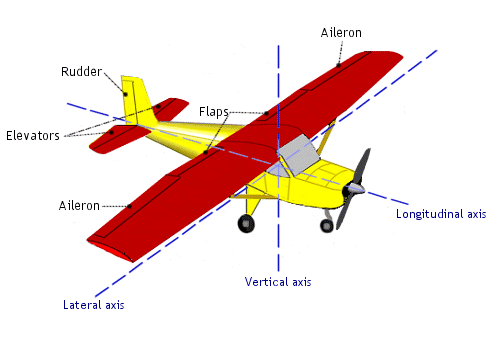This is the Second part of a long, multi-post series on writing believable starfighters in Military SF and Space Opera. You can read Part 1 here, Part 3 here.
4. Maneuvers
Starfighters fly and fight in space. Sometimes they enter a planet’s atmosphere, but for the most part, their theater of operations is space. Space doesn’t have an up or down, at least when it comes to maneuvering. You need to think about your starfighter “flying” in a three dimensional area where there is no proper up or down.
If your pilots are humans they have trouble looking up. Humans prefer to look left and right and almost never look up, as simple as that sounds. This is why hiding in trees for an ambush, nearly always works. In space, you have to look in ALL directions. You can’t get sucked into a single plane of action. Keep this in mind when you are diagramming your dog fights. You are diagramming them right? Just kidding. That’s a bit anal. But if you’re that into it, your writing will reflect it.
Airplanes turn and while they turn they bank. In space this is referred to as slewing or twisting sideways. You need gravity to do a proper bank. Let’s define banking as – The lateral inward tilting, as of an aircraft, in turning or negotiating a curve. Ever seen a motorcycle take a tight turn, it banks.

If you are not already familiar with the controls of an airplane, you need to be. You can’t write about aircraft or spacecraft without knowing how they maneuver. There are lots of books and web sites that explain this, so I won’t go into it here. Just remember that flying a plane is not the same as flying a space plane. Airplanes have moving control surfaces that redirect the flow of air over their wings.
Spaceships like the Space Shuttle, can’t use those control surfaces when in space. They use retro rockets or some variation of maneuvering thrusters to twist the ship along different axis. The Space Shuttle has many of these all around its nose and tail section. It also has traditional control surfaces, like flaps and rudders to control it while its landing.
Most of the starfighters I write about have both sets of controls, because sometimes they enter planet atmospheres. This lets me retain traditional control sticks so the reader feels like the pilot is flying the starfighter, instead of just pushing buttons that activate thruster rockets.
I have not even mentioned orbital velocities or vectors that can be affected by gravity. If you are being that detailed, you are probably not writing Space Opera, but Hard SF instead. In that case, you are in for all kinds of math and science to get these things “right”.
You should take some time to study aerobatics and see what airplanes are capable of before extrapolating those maneuvers into space. Be familiar with what barrel rolls are and various other piloting terms.
5. Formations
If your starfighters are in some kind of military, you need to be familiar with military organizational units. Are you going with Air Force or Navy units or some sort of new hybrid? These things are important and will help with world building.
In my novels, I use Air Force and Navy units: Wing, Fleet, Group, Squadron, Flight. So my starfighter Groups belong to individual starships. The Group is comprised of two or more Squadrons and the Squadrons are broken down into two or four ship Flights. Wings are composed of many Fleets. I know, it’s all confusing. But if the writer has not mapped all this stuff out and doesn’t have it straight in his own head, how is he going to keep the reader from getting lost?
Again, hit the history books and see how fighter units were organized and then compare that to how things are done now days in the military. I’ve not even touched on the Maintenance side of things or Support side. Starfighters break and need repairs, who does that? They need fuel and ammunition, who provides that? Even what the pilot wears needs support; his space suit, parachute and life support systems. Military units are complex organizations and knowing a bit about them helps you bring them to life in fiction.
This is one area where having actually served in the Air Force or Navy on a carrier, would be very valuable. Again, that’s not necessary to write great Space Opera. Use your imagination and do your research and the reader will assume you know what you are talking about. But just winging it and not being consistent in all these details will cause your readers to put down your book and walk away.
Individual flight formations were often based on how birds flew. Hey, it works for them, why not our airplanes? Fighter formations are often designed to attack and to protect the attacker. Thus you have the lead flyer and his wingman. The wingman’s job is to keep the attacking or lead fighter safe from attack while he engages the enemy. The two-ship attack formation was perfected by Claire Chennault of Flying Tigers fame in WW2.
There are many variations of combat formations. Take some time to discover them and get to know what pilots have done in the past and what they do now. It’s very interesting reading about fighter tactics. Try and incorporate what you learn into what you are writing about.
It looks like I have more to say and this post is already getting long. So tune in for Part 3 in this series where I’ll talk about Battle Damage, the Language of pilots and common mistakes made in popular films.
